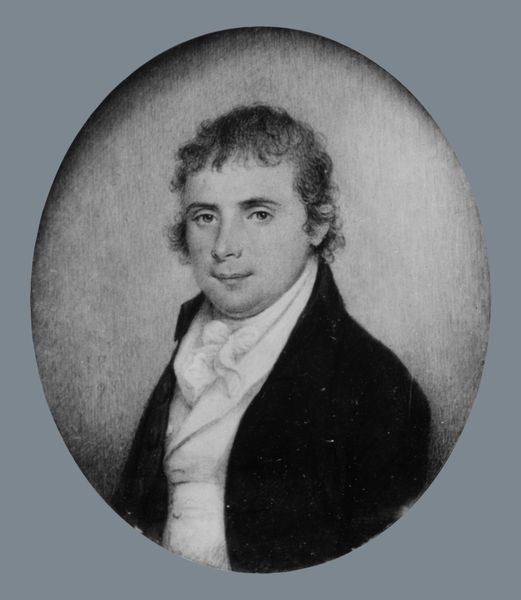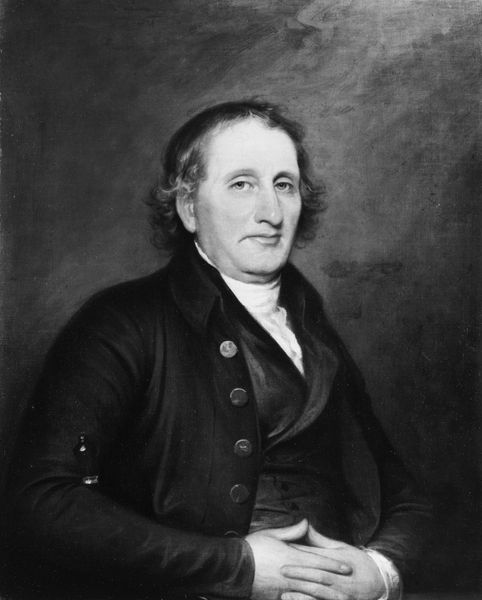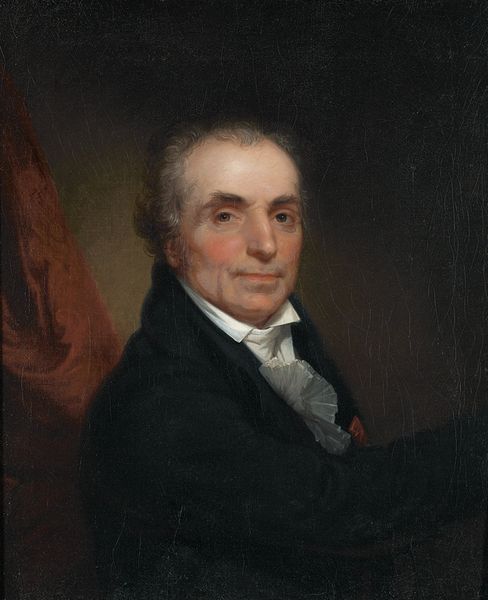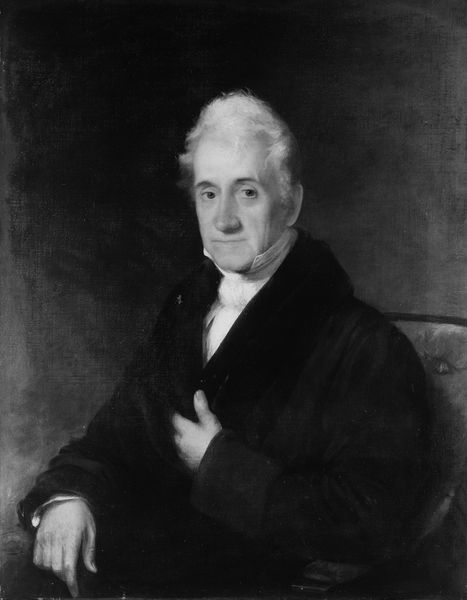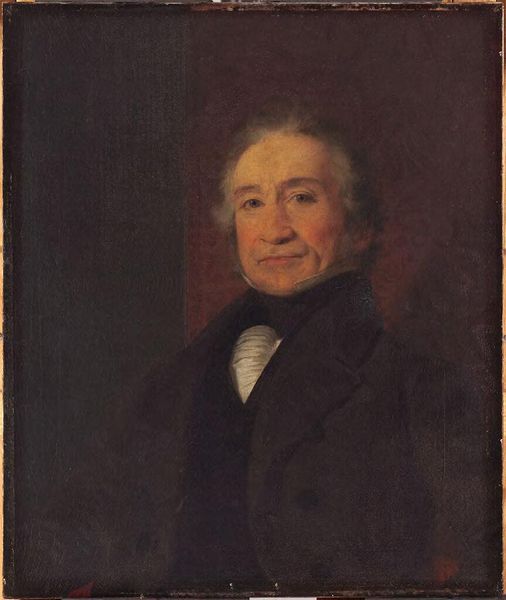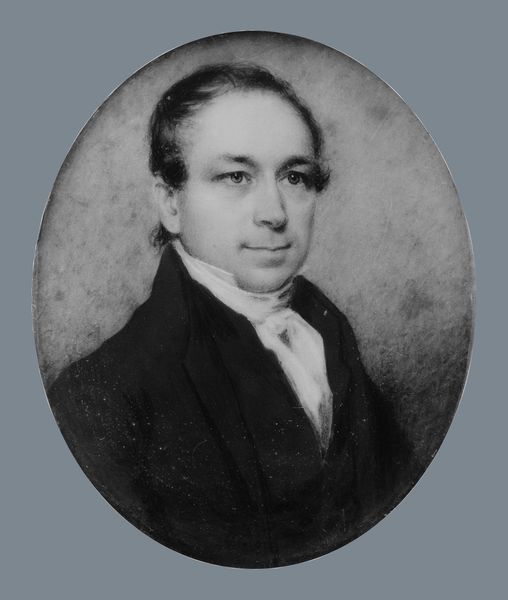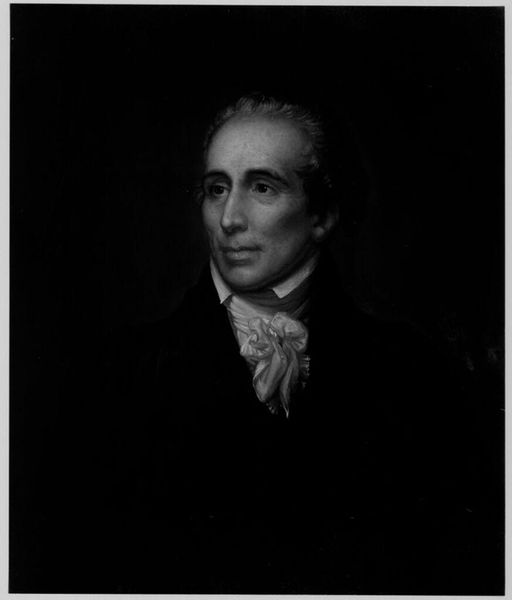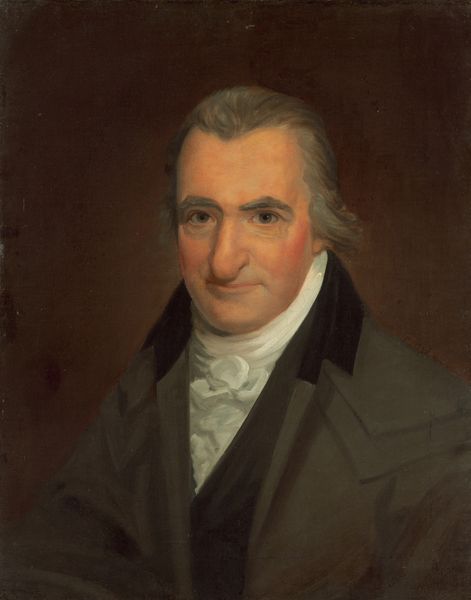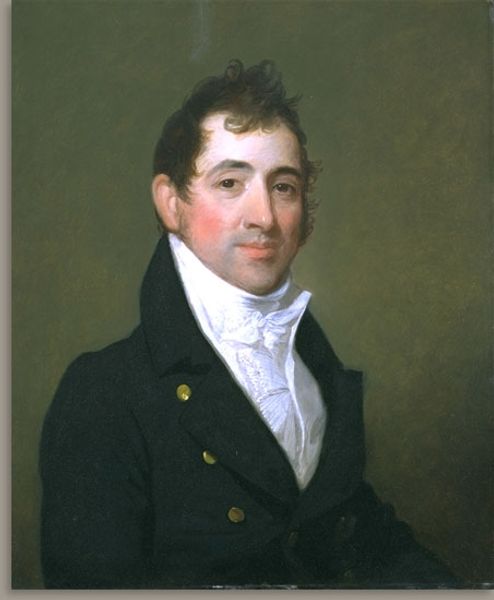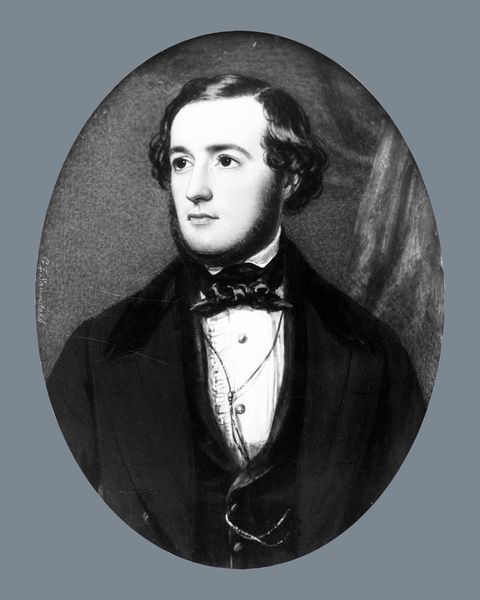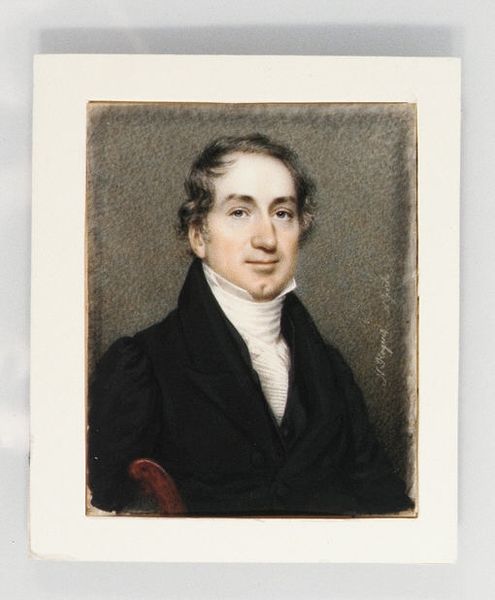
oil-paint
#
portrait
#
portrait
#
oil-paint
#
romanticism
#
men
#
academic-art
Dimensions: 3 7/16 x 2 11/16 in. (8.7 x 6.8 cm)
Copyright: Public Domain
Editor: Here we have Hugh Bridport's oil painting "Joel Roberts Poinsett," created in 1843. It has this very formal, almost stoic quality about it, characteristic of portraiture of this era, though the expression seems a bit softer than some. What can you tell us about the social context surrounding its creation? Curator: Well, this portrait emerges from a very specific moment in American history. Poinsett was a fascinating, yet controversial, figure, serving as a U.S. Minister to Mexico during a period of intense political maneuvering and territorial disputes. The very act of commissioning and displaying his portrait served political function. How do you think Bridport’s artistic choices might contribute to or soften Poinsett’s public image? Editor: That's an interesting angle. His gaze is steady but doesn't feel confrontational. Perhaps Bridport was trying to depict a more approachable version of the politician. Is it possible the artwork tries to frame Poinsett as a diplomatic or intellectual figure? Curator: Precisely. This relates directly to the intended reception and the power dynamics embedded within the art world. Wealthy and influential figures like Poinsett used portraiture as a means of solidifying their status. The fact that it's an oil painting, a more prestigious and durable medium at the time, speaks to that desire for lasting recognition. We see academic art in the romantic style framing men in particular as strong. Does knowing more about the painting make you look at it any differently? Editor: Definitely! I now see it as not just a depiction of an individual, but also as a statement about power, influence, and how people wished to be perceived. It also reflects on whose images were considered worth preserving, or worth celebrating in 1843, and which images weren’t. Curator: Exactly! Understanding the socio-political forces at play truly opens up how we view this work, wouldn’t you agree? It speaks volumes beyond just surface aesthetics.
Comments
No comments
Be the first to comment and join the conversation on the ultimate creative platform.
